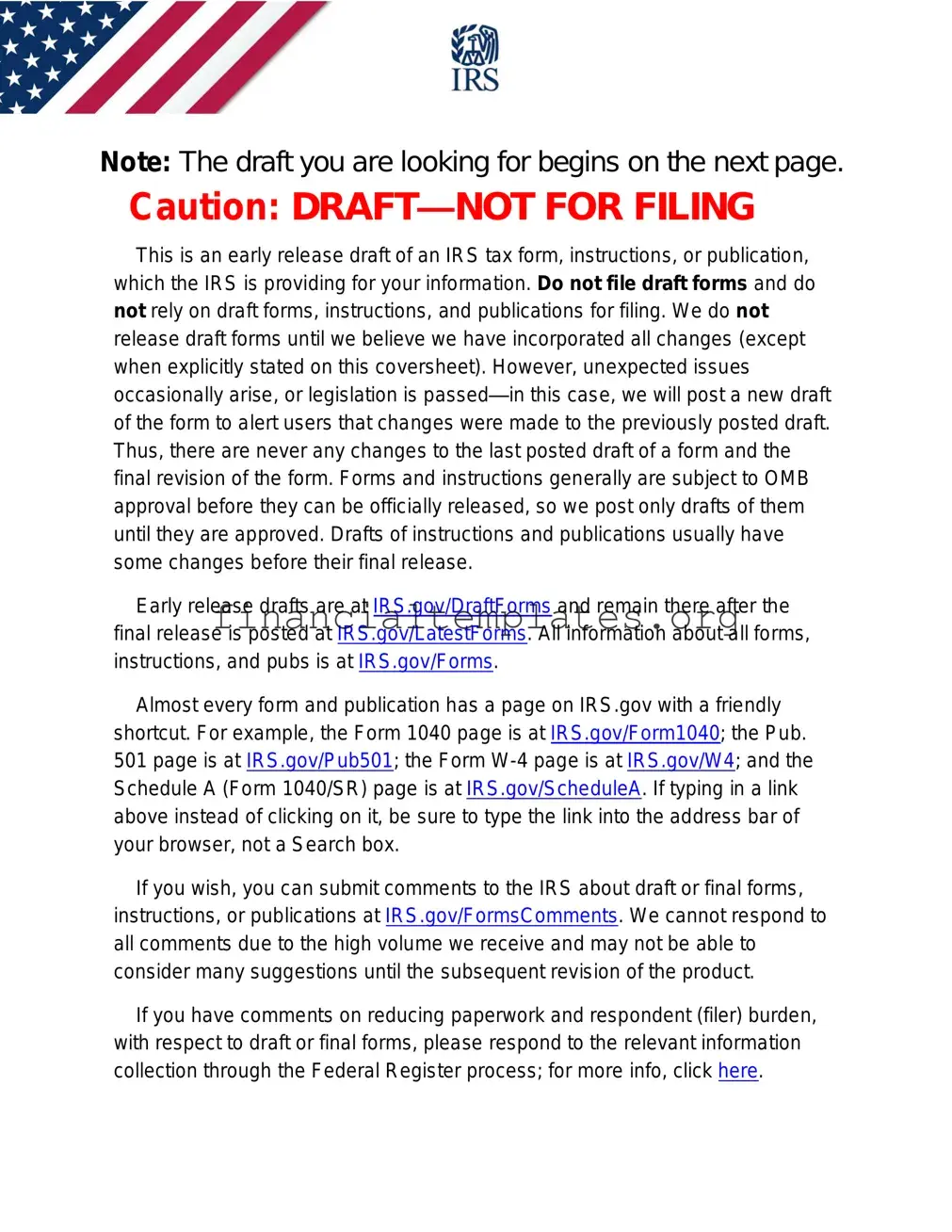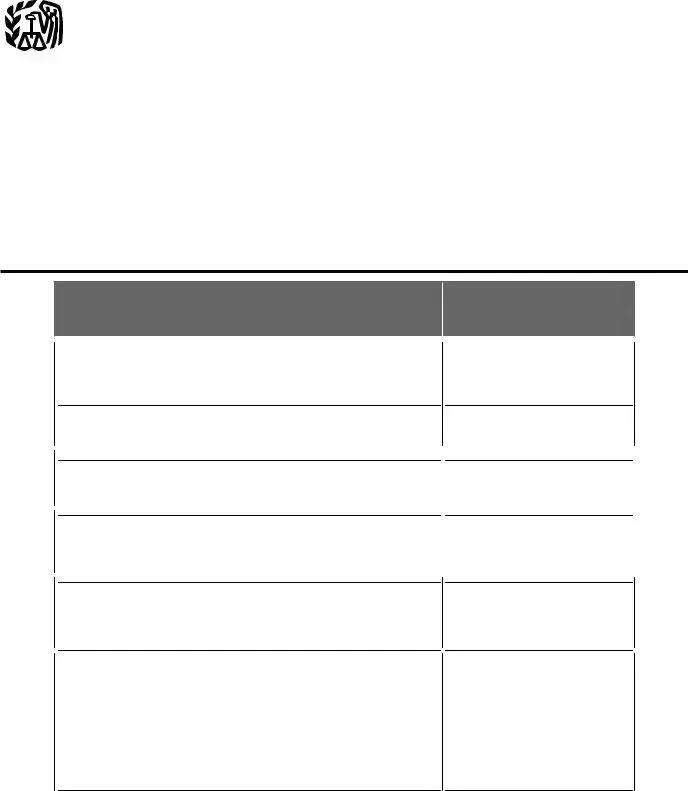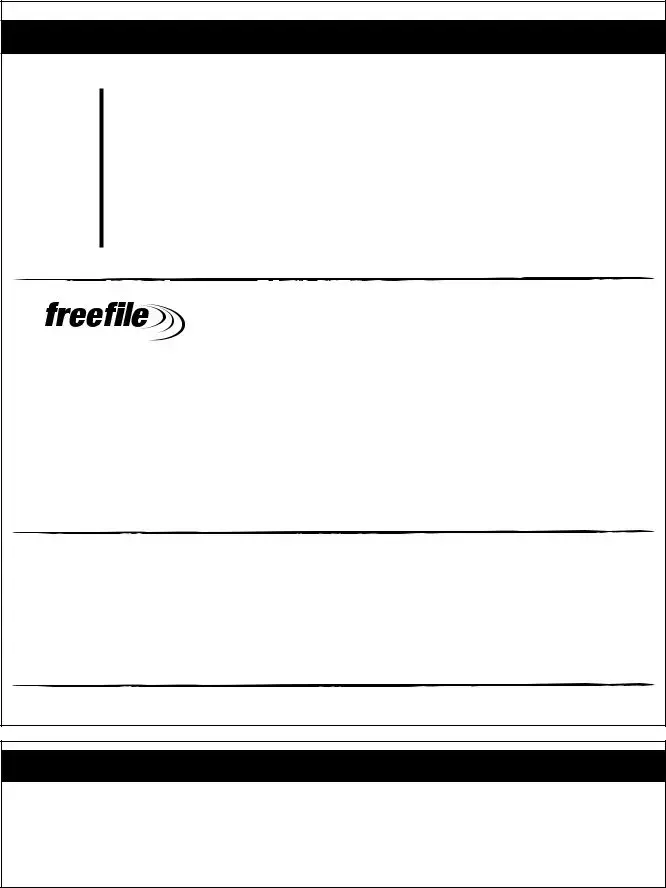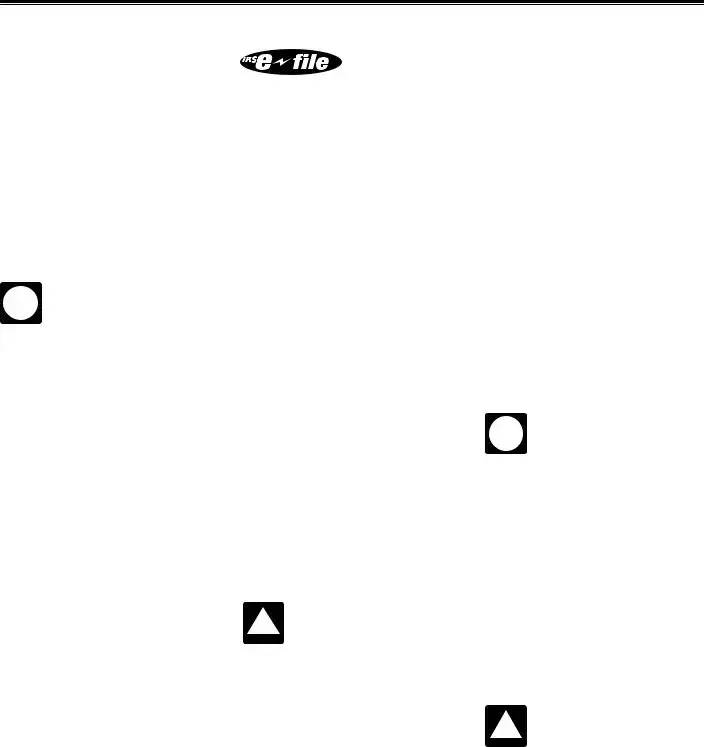|
Due date of return. File Form 1040 or |
The Families First Coronavirus Re- |
$72,000 or less, or make an appointment |
|
don’t live in theDRAFTDistrict of Columbia. If |
ASfile yourOF2021 return after November 30, |
|
1040-SR by April 18, 2022. The due |
sponse Act (FFCRA) helped self-em- |
to visit a Taxpayer Assistance Center. |
|
date is April 18, instead of April 15, be- |
ployed individuals affected by coronavi- |
Direct deposit now available for re- |
|
cause of the Emancipation Day holiday |
rus by providing paid sick leave and |
turns filed late. You can now receive a |
|
in the District of Columbia – even if you |
paid family leave credits equivalent to |
direct deposit of your refund even if you |
|
|
|
|
those that employers are required to pro- |
|
|
2021 |
|
December 3, |
|
you live in Maine or Massachusetts, you |
vide their employees for qualified sick |
2022. |
|
|
|
|
|
|
have until April 19, 2022. That is be- |
leave wages and qualified family leave |
Expanded dependent care assistance. |
|
cause of the Patriots' Day holiday in |
wages. The COVID-related Tax Relief |
ARP expanded the child and dependent |
|
those states. |
|
Act of 2020 extended the period during |
care tax credit for 2021 by making it re- |
|
Tuition and fees deduction not availa- |
which individuals can claim these cred- |
fundable for certain taxpayers and mak- |
|
its. For more information, see the in- |
|
ble. The tuition and fees |
deduction is |
ing it larger. For 2021, the dollar limit |
|
structions for Form 7202 and Schedule |
|
not available after 2020. Instead, the in- |
on |
qualifying |
expenses |
increases |
to |
|
3, line 13b. |
|
|
come limitations for the lifetime learn- |
|
$8,000 for one |
qualifying person |
and |
|
Extension and expansion of credits for |
|
ing credit have been increased. See |
$16,000 for two or more qualifying per- |
|
Form 8863 and its instructions. |
sick and family leave. The American |
sons. The rules for calculating the credit |
|
Economic |
impact payment—EIP 3. |
Rescue Plan Act of 2021, enacted on |
have also changed; the percentage of |
|
Any economic impact payment you re- |
March 11, 2021 (ARP) provides that |
qualifying expenses eligible for the |
|
ceived is not taxable for federal income |
certain self-employed individuals can |
credit has increased, along with the in- |
|
tax purposes, but will reduce your re- |
claim credits for up to 10 days of “paid |
come limit at which the credit begins |
|
covery rebate credit. |
|
sick leave,” and up to 60 days of “paid |
phasing out. Additionally, for taxpayers |
|
2021 Recovery rebate credit. This |
family leave,” if they are unable to work |
who receive dependent care benefits |
|
or telework due to circumstances related |
from their employer, the dollar limit of |
|
credit is figured like last year's economic |
to coronavirus. Self-employed individu- |
the exclusion amount increases for 2021. |
|
impact payment, EIP 3, except eligibili- |
als may claim these credits for the peri- |
For more information, see the Instruc- |
|
ty and the amount of the credit are based |
od beginning on April 1, 2021, and end- |
tions for Form 2441 and Pub. 503. |
|
|
on your tax year 2021 information. See |
ing September 30, 2021. For more |
Child tax credit. Under ARP, the child |
|
the instructions for line 30 and the Re- |
information, see the instructions for |
|
covery Rebate Credit Worksheet to fig- |
Form 7202 and Schedule 3, line 13h. |
tax credit has been enhanced for 2021. |
|
ure your credit amount. |
|
Form 9000, Alternative Media Prefer- |
The child tax credit has been extended |
|
Standard deduction amount in- |
to qualifying children under age 18. De- |
|
ence. Beginning in 2021, taxpayers |
pending on modified adjusted gross in- |
|
creased. For 2021, the standard deduc- |
with print disabilities can use Form |
come, you may receive an enhanced |
|
tion amount has been increased for all |
9000, Alternative Media Preference, to |
credit amount of up to $3,600 for a qual- |
|
filers. The amounts are: |
|
elect to receive notices from the IRS in |
ifying child under |
age |
6 and up |
to |
|
• Single or Married filing separate- |
an alternative format including Braille, |
$3,000 for a qualifying child over age 5 |
|
ly—$12,550. |
|
large print, audio, and electronic. You |
and under age 18. The enhanced credit |
|
• Married filing jointly or Qualify- |
can attach Form 9000 to your Form |
amount begins to phase out where modi- |
|
ing widow(er)—$25,100. |
|
1040 or 1040-SR or you can mail it sep- |
fied |
|
adjusted |
gross |
income exceeds |
|
• Head of household—$18,800. |
arately. For more information, see Form |
$150,000 in the case of a joint return or |
|
Virtual currency. If, in 2021, you en- |
9000. |
|
surviving spouse, $112,500 in the case |
|
gaged in a transaction involving virtual |
All taxpayers now eligible for Identity |
of a head of household, and $75,000 in |
|
currency, you will need to answer “Yes” |
Protection PIN. Beginning in 2021, the |
all other cases. |
|
|
|
|
|
to the question on page 1 of Form 1040 |
IRS Identity Protection PIN (IP PIN) |
If you (or your spouse if filing joint- |
|
or 1040-SR. See Virtual Currency, later, |
Opt-In Program has been expanded to |
ly) lived in the United States for more |
|
for information on transactions involv- |
all taxpayers who can properly verify |
than half the year, the child tax credit |
|
ing virtual currency. Do not leave this |
their identity. An IP PIN helps prevent |
will be fully refundable even if you don't |
|
field blank. The question must be an- |
your social security number from being |
have earned income. If you don't meet |
|
swered by all taxpayers, not just taxpay- |
used to file a fraudulent federal income |
this residency requirement, your child |
|
ers who engaged in a transaction involv- |
tax return. You can use the Get An IP |
tax credit will be a combination of a |
|
ing virtual currency. |
|
PIN tool on IRS.gov to request an IP |
nonrefundable child tax credit and a re- |
|
Credits for sick and family leave for |
PIN, file Form 15227 if your income is |
fundable additional child tax credit, as |
|
certain |
self-employed |
individuals. |
|
|
was the case in 2020. The credit for oth- |



 1040
1040


 Helpful Hints
Helpful Hints Schedule 2, Part I
Schedule 2, Part I 
 Schedule 2, Part II
Schedule 2, Part II 




